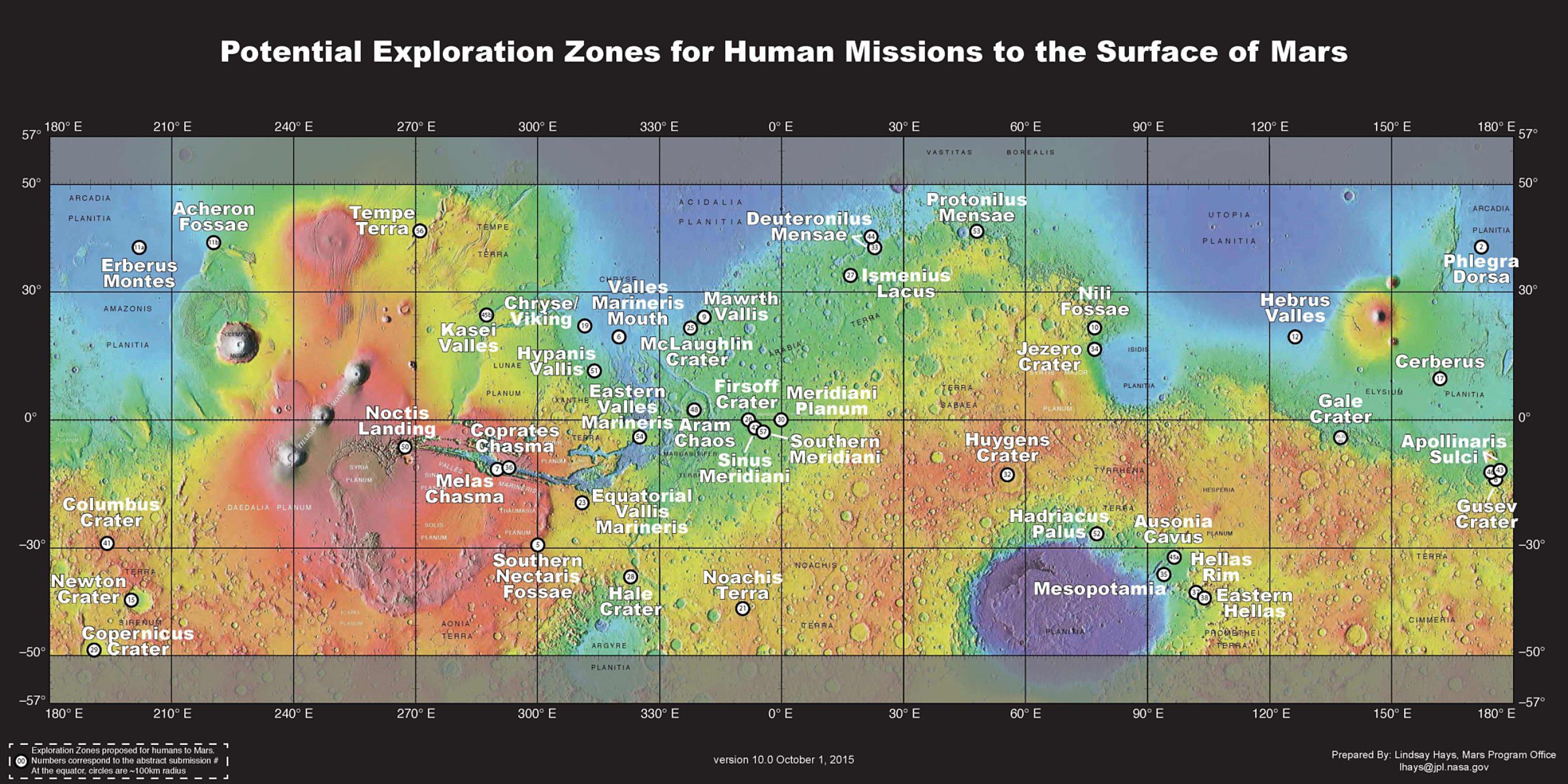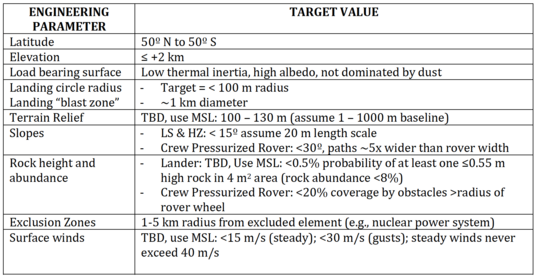Jason Davis • Oct 27, 2015
Where Should Humans Land on Mars? Workshop to Discuss Possibilities
This week in Houston, Texas, scientists are gathering to discuss where humans should first land and explore on the surface of Mars.
The landing won’t happen anytime soon—NASA is at least two decades away from sending astronauts to another planet. But the space agency wants to get the selection process started now, while some of its powerful imaging spacecraft like the Mars Reconnaissance Orbiter are still healthy.
There are already more than 40 proposed places on Mars where astronauts could land, set up habitats and explore. From Tuesday through Friday, scientists will present these spots—known as exploration zones—at the First Human Landing Sites/Exploration Zones on Mars Workshop. The workshop takes place at the Lunar and Planetary Institute near NASA’s Johnson Space Center.

Early Martian explorers are expected to be mobile and have the capability of traveling within a 100-kilometer radius of the landing and habitat site. NASA has defined a rigorous set of requirements for potential exploration zones. There are scientific demands, such as searching for past and present life, conducting atmospheric and geological science, and answering questions about Mars’ history. Wish lists are defined all the way down to the types of rock available on the surface, such as "access to Noachian or pre-Noachian bedrock units," and "access to outcrops with remnant magnetization."
Scientists are also being asked to consider how easily astronauts can prospect for water, manipulate the soil for landing pads and roads, and possibly produce food. NASA plans to decide in the next decade how reliant early explorers will be on in-situ resource utilization.
There are also engineering constraints. NASA wants sites to have blast zones for multiple cargo and crew landings, as well as crew liftoffs. All landing areas must be within 50 degrees latitude of the Martian equator, and no greater or less than two kilometers in altitude from the planet’s average zero-elevation surface level.
Fans of "The Martian" will be pleased to know several proposed exploration zones are close to Mark Watney’s fictional journey across the surface:
Mawrth Vallis: Watney reaches this location on his way to Schiaparelli Crater.
McLaughlin Crater: This crater is just southwest of the proposed Mawrth Vallis exploration zone, and according to at least one description, part of Mawrth Vallis itself.
Meridiani Planum: After being detained by a dust storm near Marth Crater, Watney heads south to Meridiani Planum, where he turns directly east for the Mars Ascent Vehicle at Schiaparelli crater. He briefly notes that he is close to NASA’s Opportunity rover.
Firsoff Crater: This crater is west of the proposed Meridiani Planum exploration zone, and part of Meridiani Planum itself.
Sinus Meridiani: Also part of Meridiani Planum, Sinus Meridiani is south-southwest of the proposed Meridiani Planum exploration zone.
Southern Meridiani: Southwest of the proposed Meridiani Planum exploration zone, Southern Meridiani is northwest from the Opportunity rover. This was also a proposed Curiosity landing site.
Valles Marineris Mouth: Watney is due east of this exploration zone when he retrieves the Pathfinder spacecraft and Sojourner rover.


 Explore Worlds
Explore Worlds Find Life
Find Life Defend Earth
Defend Earth


